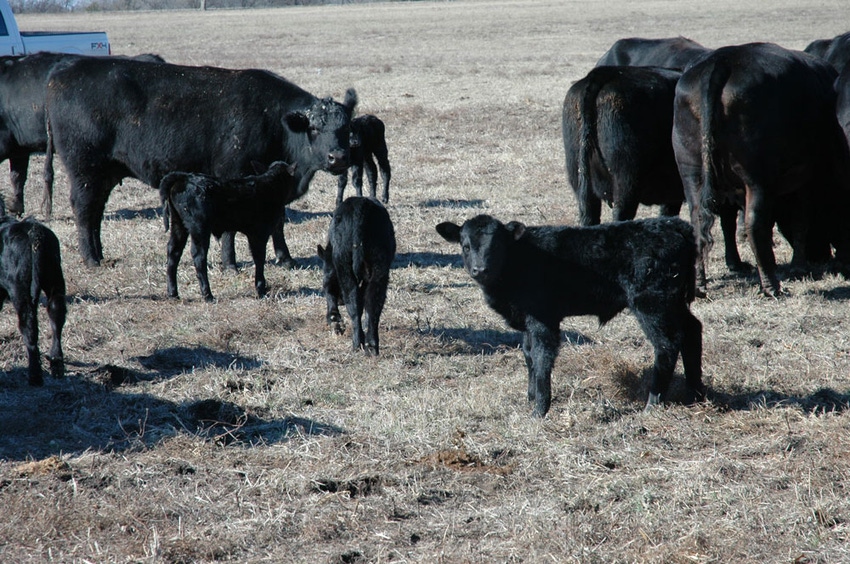August 29, 2013

Gant Mourer, working with Oklahoma State University animal scientists and the Oklahoma Cattlemen's Association, is helping state cattle producers get more money for their cattle when they go to market.
Mourer, OSU beef enhancement specialist, explained the program at the recent OCA state convention in Oklahoma City. He is responsible for the Oklahoma Quality Beef Network (OQBN), a program partially funded by the OCA.
Since 2001, OSU has led the VAC 45 program where calves are given all their vaccinations to keep them healthy and are weaned for 45 days before being sent on to the next step in the cattle production chain.
"Under this program," Mourer said, "ranchers' calves are verified by OSU Extension county directors before they are marketed."
Economists report the program yields 600-pound calves bringing a premium of $5.43 per hundredweight. Cattle certified in the VAC 45 program bring a $12.50 per hundredweight premium, he said. Statistics derived from surveys conducted by Mourer indicate ranchers with cattle in the program make a profit 62 percent of the time. "Figured on the average," Mourer said, "the profit is $35 per head."
If you are enjoying reading this article, please check out Southwest Farm Press Daily and receive the latest news right to your inbox.
Cattle in the VAC 45 program have been found to make a profit 80 percent of the time compared to calves going through the sale on the same day without any backgrounding, Mourer said. Again, on the average that means an extra $70 per head received by owners participating in the program.
A quality issue
Cattle quality has a lot to do with cattlemen making a profit on their calves, he said. This key component will help even more in the future as ranchers seek to improve the quality of their cattle.
Surveying participating ranchers in the OQBN to see if they have problems needing to be resolved, Mourer indicated no problems were reported this year.
Cattle enrolled in the program had a death loss of 1 percent compared to seven to 8 percent in non-participating cattle during the past winter, he said. In a survey he conducted in 2012, Mourer found 107,000 cattle enrolled in value-added programs in Oklahoma. For comparison, 47,000 cattle were enrolled in such programs in 2007. These are estimates, but Oklahoma sale barn operators report more and more cattle in such programs sold through their sale rings.
Of the total cattle sold in Oklahoma in 2012, 6 percent were value-added cattle. In 2007, the figure was 2.37 percent he said.
Reporting on information made available by the USDA Animal and Plant Inspection Service, Mourer said the number of feedlots buying background information on cattle entering their feedyards is increasing. Surveys taken by the APHIS report 77 percents of these feedlots find this information important. Seven percent of the feedlots are not asking for this type of information from ranchers sending cattle to feed.
Seventy percent of feedlots surveyed want background information on their cattle whether or not it is certified, he said. Only 34 percent of the feedlots surveyed are getting all the information their want and 58 percent report receiving some type of information.
Mourer said the OQBN is adding cattle sales farther west in the state this year. "We will have OQBN sales at Cherokee and Elk City," he said.
This fall, the program will be working with Consolidated Beef Producers, which owns feed yards in Oklahoma, Kansas, Colorado and Texas.
"These feeders are looking for feeder cattle entering their feed yards, which have been enrolled in value-added programs," he said. "They have had trouble finding these cattle. By working with Consolidated, we will post on the internet where OQBN cattle are, what sale barn they will be sent to and on what date."
This addition to the program will help feedlot personnel see where these cattle are and it will enable them to have a buyer at the sale, he said.
In the spring of 2013, Mourer reported, they approved a pre-conditioning program for stocker cattle similar to the VAC 45 program.
It will not replace the VAC 45 program, but will complement it. "It is designed for put-together cattle from multiple sources," he said. "In this program, owners will have to retain their cattle for 60 days. The idea is to put them on grass and straighten out any health problems they might have."
Mourer said the next step is to verify genetics of feeder cattle. "Several programs of this type are already in existence to help verify how calves will perform in the feedlot based on their genetics."
Also of interest on Southwest Farm Press:
Cattle producers young and old should plan accordingly for drought
New Oklahoma Cattlemen Association leader optimistic about state cattle…
About the Author(s)
You May Also Like




